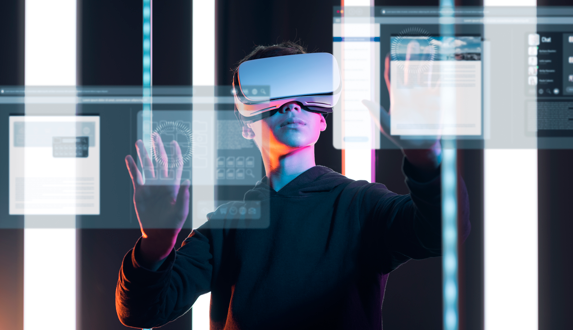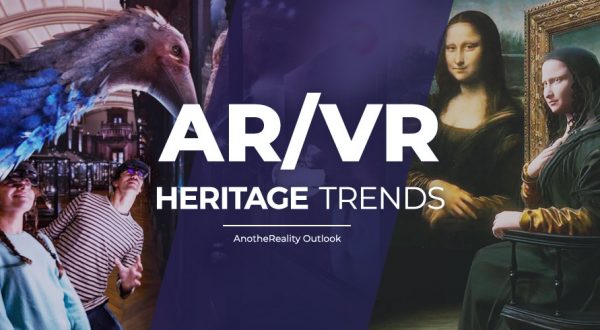In recent years, content production has evolved significantly towards immersiveness. However, this has created some confusion, especially regarding the differences between VR and 360-degree videos, or, more accurately, between interactive 3D virtual reality – which we will refer to as “3D VR” for convenience – and 360° videos (often confused by non-professionals). In this article, we will clarify the differences between VR and 360-degree videos and explore the potential of both, guiding the choice of the right format and technology for those – such as brand managers, communication managers, and agencies – who want to make their communication more immersive.
There’s virtual and then there’s virtual…
An immersive multimedia product is, in general, a highly intense and enveloping experience. From this perspective, both 360-degree videos and 3D VR experiences are immersive. However, in our opinion, only 3D VR is, in an orthodox sense, “true virtual reality,” characterized by a differentiating element: the combination of movement and interactivity.
Before delving into the details of the differences between VR and 360-degree videos, it is important to introduce the concept of DOF (Degrees of Freedom) – the degrees of freedom that determine if, how much, and how we can move within the space and the experience. We can have three or six degrees of freedom.
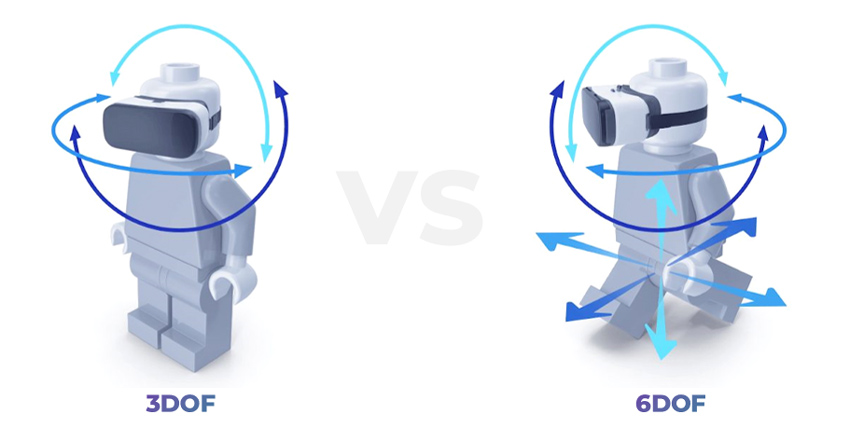
3DOF is typical of 360-degree videos, where you can only follow the movements of your head and look around in three directions. You cannot take steps forward/backward, lean, or approach an object. That’s why it is often recommended to view this content while seated. Why? The answer is simple: what the user sees is the point of view of a camera that captured/filmed from a fixed point.
As a result, interactivity is also extremely limited, often reduced to the ability to change videos and environments via hotspots and interact with spatialized 2D UI elements (such as buttons, informational panels, and the like).
On the other hand, 6DOF characterizes the case of 3D VR, where the experience can be developed to achieve 100% immersiveness. In this case, there is complete freedom of movement thanks to the perfect correspondence between movements in real space and virtual space. Consequently, interactivity is also extremely natural, allowing the user to move, approach objects, grab them, and interact with them.
The environment – created with real-time 3D graphics like those used in video games – is a true alternative virtual dimension where the type of interaction can range from “zero to infinite.”
HOW TO CREATE 360-DEGREE VIDEOS
A 360-degree experience generally involves capturing video or photography of a real-world space, where simultaneous recording is done in all directions without space limitations (or, potentially, through CGI production).
To create this content, it is necessary to use either all-in-one omni-spherical cameras or multi-camera rigs.
- All-in-one 360° cameras: These are typically the most affordable options for the general public and offer a good balance of quality and price. Some of the most popular models include the GoPro Fusion, GoPro MAX, Insta360, and Insta360 One X2.
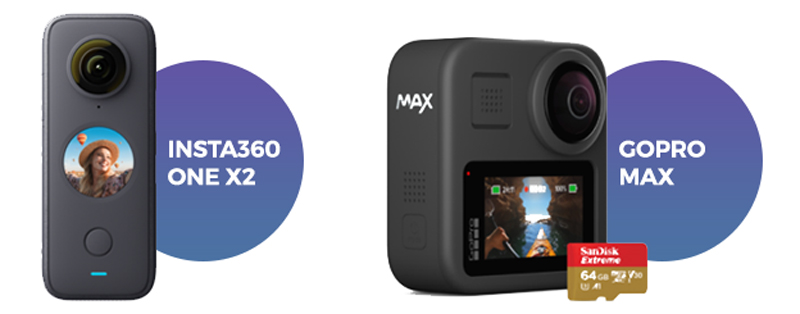
- Multi-camera rig or Eye: In this case, the 360-degree effect is achieved by combining multiple simultaneous recordings from multiple cameras and thus from multiple viewpoints (6, 12, 18, 36, or even more). It will be necessary to “merge” the individual videos from different viewpoints (a process called “stitching”) using video editing software such as Adobe Premiere, Adobe After Effects, Autopano Video Pro, GoPro VR Player, Mistika VR, etc.
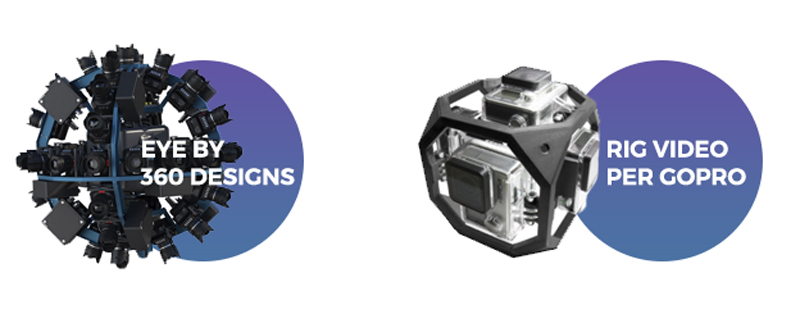
360-degree videos can be viewed in the following ways:
- Through a VR headset or cardboard viewer, for a more immersive experience and isolating the user.
- Through browsers or traditional video players navigable on desktop/mobile using a mouse or touch.
Platforms like YouTube implemented this video format shortly after its market release, allowing navigation of 360-degree videos on the screen as well as using a cardboard viewer and enabling the sharing of such content.
360-degree videos can also be created using stereoscopic cameras, which capture footage from two parallel cameras that generate a different video for each eye. This allows for a greater illusion of depth compared to the aforementioned monoscopic cameras. Videos captured with these cameras are called stereoscopic 360-degree videos, sometimes simply referred to as “VR videos” by non-professionals.
HOW ARE INTERACTIVE 3D VR CONTENTS CREATED?
An experience in 3D virtual reality is the representation of a digital world typically created using 3D graphics, where the user can move around and potentially interact with the environment and objects within it.
The main strength of this technology is that the viewer transitions from being “constrained” to an active protagonist, feeling physically and completely immersed in a space that their brain perceives as natural and real. They can move, see their hands and body in the form of an avatar, and approach and interact with objects, all thanks to head and hand tracking (and more) and the freedom provided by 6DOF (Degrees of Freedom).
VR engages all five senses of our body, primarily sight, hearing, and touch, and in certain cases, even smell and taste.
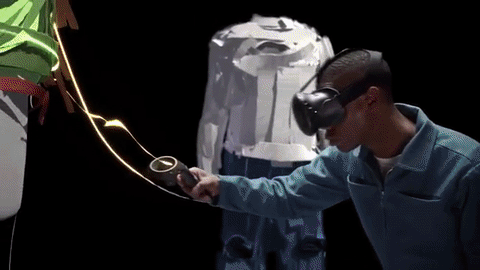
Such content – only viewable through a VR headset – requires the involvement of a skilled team capable of using software typically used in the gaming industry, as these are real-time experiences. Just to mention a few:
- 3D artists and graphic designers who can model and create the set objects and environment, handle lighting, animations, and visual aspects, typically using software such as Blender, 3DS Max, Maya, Cinema4D, Substance Designer, ZBrush, etc.
- Developers who can program and write code (usually in C#/C++) using game engines like Unity and Unreal Engine.
- UI and UX designers specialized in XR, who know how to guide a user in their interactions “in space,” not only through a screen as can happen in mobile apps.
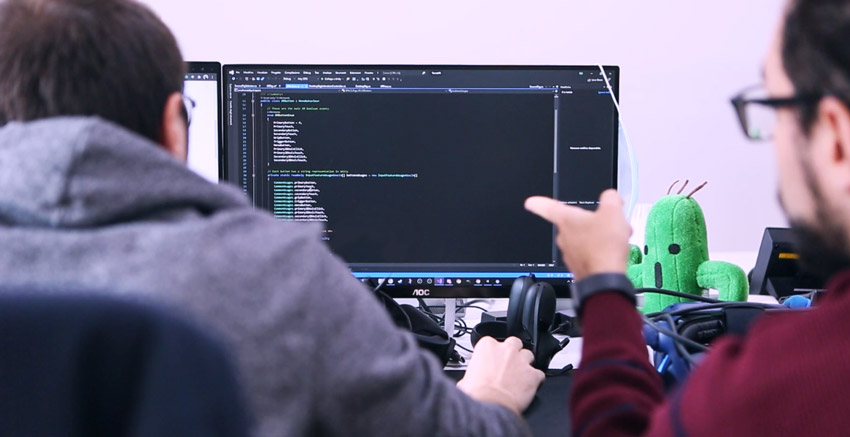
But what are the differences between VR and 360 videos?
Here is a summary of the two scenarios.
3D VIRTUAL REALITY VR | 360-DEGREE VIDEO |
Visual aspects | |
Digital environments produced by 3D graphics rendered in real-time by game engines. | Videos generated from 360° camera shots or prerendered by Computer Graphic Imagery. |
Immersivity | |
| Total: the viewer is completely immersed in a digital reality with which he interacts and in which he can move (6DOF). | Partial: less strong sensation of inclusiveness being the movement limited to a rotation of the head around a fixed point (3DOF). |
Point of view | |
| First person; coincides with that of the avatar or what is designed. | First-person; coincides with that of the camera. |
Movements in space | |
Endless, as many as have been designed, implementable through “controllers” and other devices/optional. | Limited by the director’s camera movements and the number of camera points. |
Setting/history | |
The storyboard-fully rendered-changes based on actions, not just the user’s vision. In this sense, the affinity with games is obvious. | The viewer can still choose where to look. However, it is up to the director’s work to “guide” the experience, obviously taking into account the “unpredictability” of the user. |
Budget | |
Depends on the project; entry level tends to be higher. | Depends on the project; entry level tends to be lower. |
Fruition | |
| Exclusively through a virtual reality viewer (standalone or PC-connected). | Via VR viewers/cardboards, but also from “traditional screen” (mobile and desktop). |
How to choose between a 360-degree video and an interactive 3D VR video? It depends, as always, on the ultimate goal.
In general, interactive 3D VR experiences are suitable when you really want to immerse the viewer with a higher level of immersion. The ability to interact with the environment, to see and control your own hands and body in real-time, to create even fantastical environments or detailed procedures, all contribute to a greater sense of “presence.” This results in a more pronounced emotional impact compared to 360-degree videos. It goes without saying that, due to the production requirements mentioned earlier, VR content generally tends to cost more.
On the other hand, 360-degree videos are generally less expensive and suitable for projects where dependence on a headset is not possible or desired. They are more focused on the realism of environments, objects, and especially real people in the video content, rather than a sense of full immersion. They are also suitable for scenarios where high levels of interaction with the environment are not required.
Here are some examples to give you an idea of how the specific needs of each case guide the technological choice:
Simulation and training in 3D VR for Olivetti: We developed an application that required a high level of interactivity and hand usage, as it involved an assembly procedure. [Video]
Interactive 360-degree experience for A2A: In a complex industrial context that is difficult to faithfully reproduce in 3D, it was important to test choices and theoretical preparation for the procedure using 2D UI panels inserted into the video. [Video]
Virtual showroom and virtual tour with 360-degree photos for Frette: 360-degree photos are perfect for showcasing the quality, colors, and textures of the client’s textile products, all navigable on the web without the need for a headset.
In the realm of film production, we would like to mention “Dreams of Blue,” a 360-degree film by Hive Division (not produced by us).
Ultimately, the choice between a 360-degree video and an interactive 3D VR video depends on the specific requirements of each project and the desired level of immersion, interaction, and realism.

